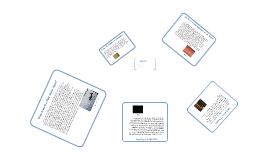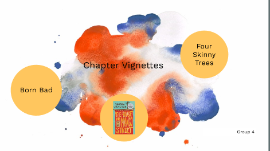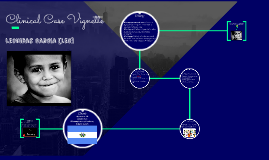Vignette
Transcript: David Ray Ms. Rosenbaum AP English Language and Composition- 1A September 16, 2011 Never Would Have Guessed It When I was younger, speaking in front of people was a big deal to me. Back then, I found it very difficult to stand in front of a large group of people. I am sure that we all remember our grade school years, when we had to do the Tropicana Speech; it was undoubtedly difficult for all of us. I distinctly remember doing my speech in front of the school and messing up: badly, very badly. It didn’t end up bothering me too much though, as I ended up taking 2nd place in the competition anyways. If anything, the experience helped me get over my problem. Regardless, it is easy to see that today I have long overcome my troubles with speaking in front of others and that it is no longer a big deal to me. The Most Comfortable Pants in the World On Christmas of last year, I, along with Andrew Baldridge, surprised Talon with a gift that he definitely did not expect. Around this time, my friends and I had arranged a "white elephant" of sorts, without the element of surprise. Nobody could decide what to get for Talon, so together Andrew and I developed an ingenious idea that would soon become what is basically the greatest gift of all time. We bought a pair of cheap jeans (very, very, cheap) and a pillow, which (in reference to joke) we sowed onto the inside of the jeans, in order to give the wearer of the pants the most comfortable butt in the world. To top it off, we wrote "Most Comfortable" on the back of the pants for good measure. Needless to say, this gift was very funny for everybody, and comfortable. The only thing that could have made this story better is if we had used memory foam rather than a pillow on the pants. What Were We Mad About Again? I have been close friends with Talon Bullard for many years. Like we all know, when friends are together for a long time, they will quickly forgive and forget any arguments they may have had in the past, emphasis on forget. Several years ago (probably in 2005 or 2006) Talon and I went on a summer trip together. During this trip, Talon had gotten sick to the point where he had lost his voice completely; he had to whisper everything or his words would be inaudible. At some point during the trip, for reasons beyond me, we had gotten into an argument. The same day, we went canoeing together: bad idea. I sat in the front of the canoe and, naturally, Talon sat in the back. Throughout the duration of the trip, I was constantly turning around and yelling something stupid that a ten year old kid would say (as I was ten years old, probably), and Talon would immediately attempt to yell something back, but his voice would instead simply trail off into silence. It is amazing that we never tipped the canoe over. Years later, we are still very close friends who look back and laugh about just how foolish we once were. For the life of me, I still cannot remember what we had fought about. Trust Me, it is This Way A few years back, I had once gone on an orienteering course in the woods with a group of people I knew. The basic idea behind the course was for us to use a compass and count paces (for distance) to find our way from point A to B, and so on. I distinctly remember determining which way to go, when one of the other members told us the way he thought was correct, a way very much different from mine. However, I decided to follow his path, as I had cared far too much about his opinion. We did not finish the course for hours. Never Knew I Changed When I was very young, I grew up as a rather shy child. I grew up with my neighbor, whom I consider to be my older brother. After spending many years with this person, I ended up being the outgoing person I am today. I had never noticed this change occurring while it was happening, but I know that much of it was due to him. Hilarious One Year Later Vignettes Ugh...

















